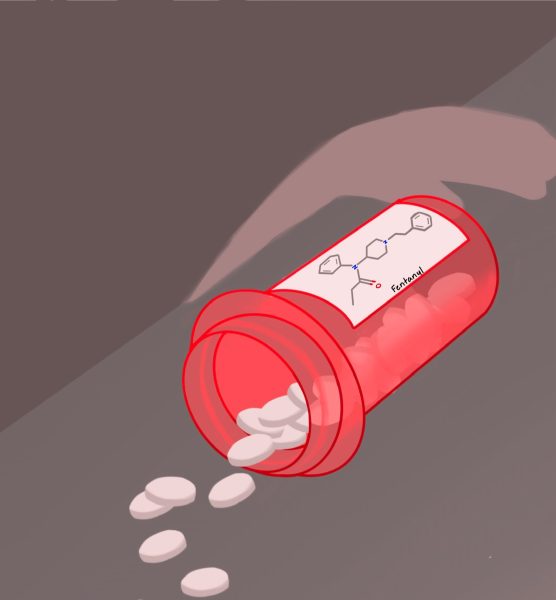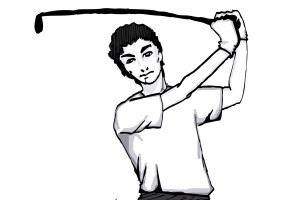Traveling Exhibit Explores Influence of Nazi Propaganda
This thought-provoking exhibit comes through a partnership with the United States Holocaust Museum in Washington D.C. and is also being shown in cities such as Chicago, St. Louis and Kansas City.
Running from November 15 through March 15 at The Maltz Museum of Jewish Heritage, State of Deception: The Power of Nazi Propaganda examines how the Nazis used propaganda to get their agenda across to the German people, and why that still matters today.
This thought-provoking display of historical memorabilia comes through a partnership with the United States Holocaust Museum in Washington D.C., the third such partnership. The exhibit is also being shown in cities such as Chicago, St. Louis and Kansas City.
Dr. Steve Luckert, the Curator of the Permanent Exhibition of the National Holocaust Museum, has two main things he wants people to take away from the exhibit.
“I want them to understand the powerful ways the Nazis used propaganda to win over millions of people with their radical agenda,” he said.
He also wants this to help make people, particularly younger people, more aware of how the internet and social media can shape their opinions and behaviors.
The exhibit is attracting interest from youth around the Cleveland area. Several teenagers attended the opening either with their parents or by themselves.
“I am fascinated and overjoyed that (younger people) are interested in this topic,” said Mark Davidson, Manager of School and Family Programs at The Maltz Museum.
The Nazis reached people of all ages through use of posters, photos, radio, film, records and television.
Davidson explained that Nazis had a modern approach to propaganda. They hired graphic designers, targeted certain groups, and used slogans such as “Work and Bread” to win people over.
While the Nazis’ views were extreme, they were successful at defeating many other political parties and gaining the favor of the German people.
“The Nazis were political geniuses,” Davidson said.
The demented talent of Nazi graphic designers is clear in one of the posters in the exhibit. It is a minimalist, polarizing design, simply featuring Hitler’s blank stare, with his name inscribed beneath.
Formerly a symbol of peace common in India, Hitler adopted the swastika as the Nazis’ official symbol. Hitler turned this formerly peaceful design into something much more terrible.
The Nazis used propaganda both during their rise and during their reign to scapegoat their enemies, such as political opponents and the Jews, and to instill a disciplined and fanatic following among the German people.
The pieces in the exhibit reflect this. One shows a German soldier striking down a red dragon with a star on it, meant to represent Communists. Another startling example shows a German board game titled “Jews Out!”.
One thing that surprised Davidson was learning that Hitler, perceived by many as an effortlessly charismatic figure, hired body language and speech coaches in order to mold his public image to fit that image.
“I thought Hitler was a natural leader, and that he knew how to talk and appeal to people right away,” he said.
Another surprising fact recounted by Davidson is how the Nazis helped spread the use of radio in Germany. Before they came to power, radios were not very common in Germany. In order to establish yet another way to reach their citizens, The Nazis mass manufactured radios and sold them for a reduced price or gave them away to the people. Thus, at the end of the war, radio was much more common.
The exhibit seemed to strike an emotional chord with attendees.
“(Attendees) don’t come out elated or happy; they come out sad. People are saying it is very powerful,” Davidson said.
The exhibit is so successful because it places visitors in the shoes of the average German citizen, and re-enacts the pro-Nazi messages they were receiving.
The walls are adorned with quotes from people who lived under the regime, phonographs playing German records of the time, posters and perhaps most startling of all, a bust of Hitler’s likeness. Attendees get a real sense of the effect Hitler and his cronies had on the German people.
Not everyone was under the Nazis’ spell, however, as illustrated by this featured quote by Ruths Andreas-Fredrich, a German journalist and member of the resistance.
“Every day millions of pounds of printed paper go rolling out of this building, vomiting a torrent of National Socialist propaganda over mankind. And yet there’s hardly one person under our roof who agrees with what he writes, sets, prints, edits, or carries from office to office.”
Andreas-Fredrich’s voice revealed that the Nazis didn’t have everyone under their spell, and people still had ways to passively resist.
The last part of the exhibit focuses on what the Allied powers had to do to undo the effects of Nazi propaganda.
Davidson explained that some of these measures included criminalizing Nazism and Holocaust denial, destroying the existing Nazi propaganda, and using the Nuremberg trials to expose the crimes of the Nazis. These laws are still in effect in Germany today.
Perhaps the most prominent example, however, is opening the former concentration camps up to tourism, in order to serve as a stark reminder of the crimes under the Nazi regime.
(all photos by Alex Cala)

Alex Cala has been writing for The Beachcomber since the fall of 2014, when he was a sophomore. He became the opinion editor the following year. Alex tends...











